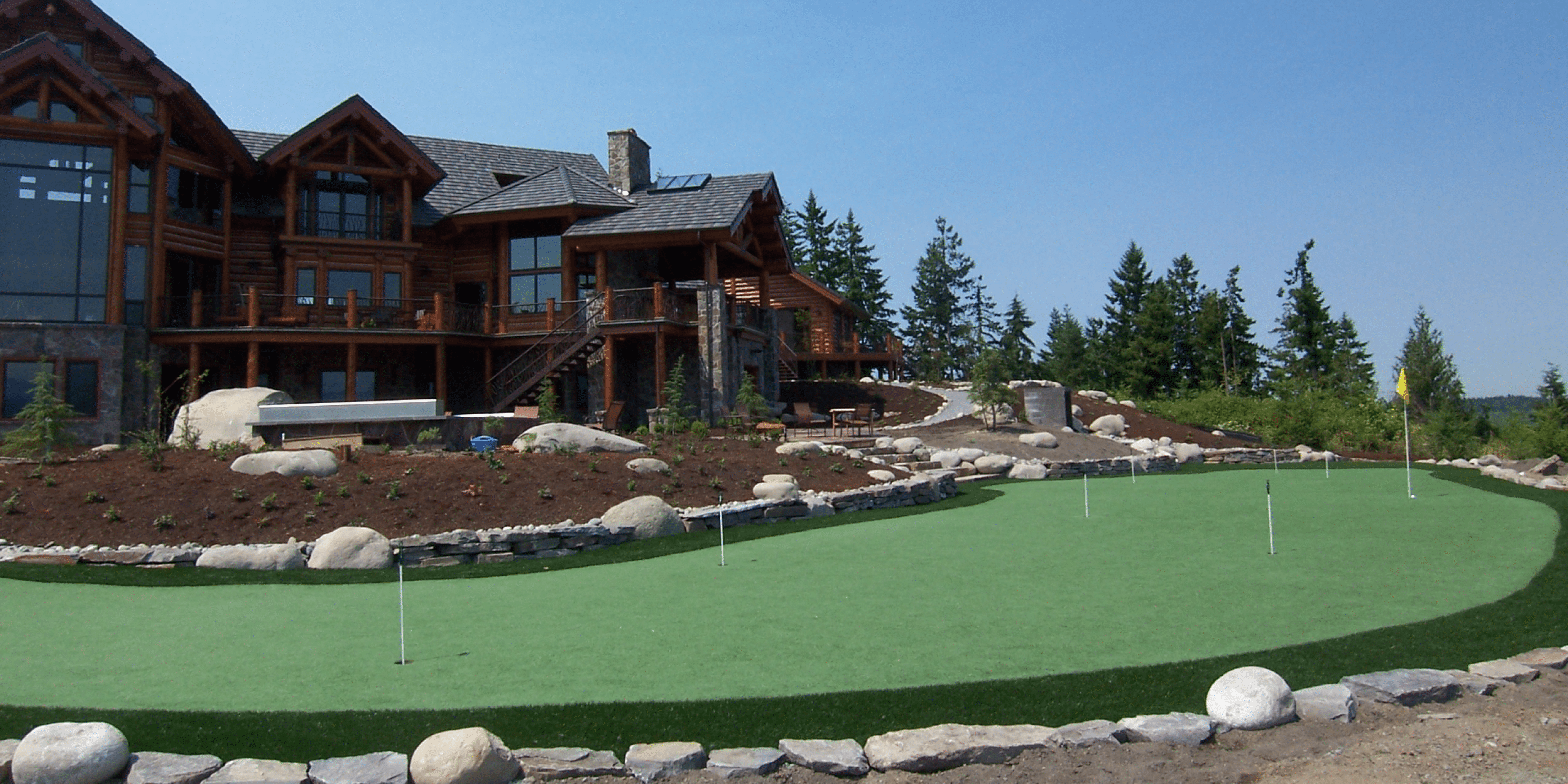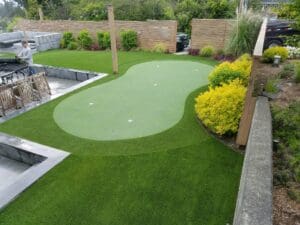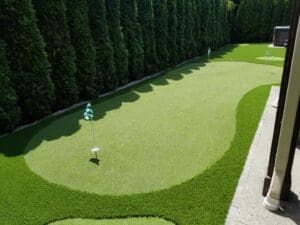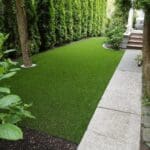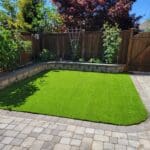Synthetic turf has become an increasingly popular option for homeowners looking to upgrade their backyards with low-maintenance lawns or putting greens. Its consistent appearance and minimal upkeep requirements make it a compelling choice for those who want to avoid the hassle of natural grass. However, there are a few key considerations when planning for turf, especially when it comes to backyard putting greens. In this guide, we’ll dive into the most common challenges, essential design details, and potential maintenance issues you may encounter.
Common Mistakes in Backyard Turf Installation
When it comes to installing synthetic turf, one of the most frequent mistakes homeowners make is poor design. This issue often stems from not paying enough attention to crucial details that can make or break the overall look and performance of the turf. Mike Vandaveer, owner of Synthetic Turf Northwest, emphasized that design flaws can detract from an otherwise high-quality installation.
“The most common mistake is poor design. People can set themselves up for success with the correct seaming diagram, turf grain direction, transitions, and borders. It’s like wearing new clothes with dirty shoes and scruffy hair. The little details hide the good parts,”
Seaming diagrams: Proper seaming ensures the turf pieces blend seamlessly, giving the appearance of one continuous lawn or green. Seams can be visible without careful attention and take away from the overall aesthetics.
Turf grain direction: The order of the turf fibers, or grain, can affect the color and texture. Incorrect alignment can result in uneven shading and an unnatural look.
Transitions and borders: A clean, well-defined edge where the turf meets other landscaping elements, like hardscape or flower beds, helps create a professional finish. Poor transitions can lead to fraying and reduced durability.
Challenges with Sloped or Uneven Ground for Backyard Putting Greens
When considering installing a backyard putting green, one of the most critical aspects to keep in mind is the levelness of the surface. Putting greens requires a relatively flat and smooth area to ensure they are playable. If the ground has large lumps or significant slopes, this can lead to issues.
“We generally want to start with a pretty level surface for golf greens. If the space is not generally level, the greens become unplayable. Sometimes, retaining walls and leveling are needed if the space starts with too much slope,” said Vandaveer
Leveling the ground may involve additional preparation steps, such as building retaining walls or grading the land to create a more even playing surface. While minor details can be added to create the experience of playing on an actual golf course, too much slope or uneven ground can make the putting green challenging to use.
For homeowners serious about installing a backyard putting green, taking your time and using resources to properly level the space before laying the turf is essential.
Maintenance of Backyard Putting Greens
One of the reasons synthetic turf is so appealing to homeowners is its low-maintenance nature. However, putting greens come with their own set of care requirements to keep the surface smooth and playable. Vandaveer emphasizes the importance of regular upkeep to ensure your putting green stays in top condition. “Regular cleaning is important, and the turf needs to be brushed to maintain a smooth surface for putting,” said Vandaveer.
Here are some tips for maintaining your backyard putting green:
Brushing the surface: Over time, the turf fibers on a putting green can become flattened or matted, especially in high-use areas. Regular brushing helps keep the fibers upright, ensuring a consistent and smooth surface for ball roll.
Clearing debris: Leaves, branches, and other debris can accumulate on the turf, particularly if you have trees nearby. Removing the debris regularly is good for maintaining the green’s functionality.
Addressing bumps: Tree roots or burrowing animals like moles can cause bumps to form under the turf, disrupting the smooth surface. Inspecting the area periodically and addressing these issues will prevent long-term damage.
Is Synthetic Turf Suitable for Side Yards?
Side yards are sometimes overlooked spaces in home landscaping, but they can offer valuable square footage for activities such as a dog run or a small golf green. However, when considering synthetic turf for a side yard, it’s important to evaluate how the area will be used.
“It depends on how the side yard functions. Is it a high-traffic access area to the front or back yards? Then generally, no. If it is a flex space for a dog run, golf green, or other, then yes, turf can work great for side yards and add a ton of function,” said Vandaveer.
In high-traffic areas, such as pathways frequently used to access different parts of the yard, synthetic turf may not be the best choice, as heavy foot traffic can wear down the turf more quickly. On the other hand, for lower-traffic areas, turf can bring more functionality to the space, especially for activities like golf practice or providing a strong surface for pets.
Potential Issues with Backyard Turf
While synthetic turf offers numerous advantages, it still has its potential challenges. However, these issues are typically minimal and can be easily managed with proper planning and maintenance. According to Vandaveer, backyard turf doesn’t usually present many problems, but there are a few things to keep in mind.
“It’s a pretty simple solution that doesn’t come with many issues,” said Vandaveer.
That being said, there are some occasional challenges to watch out for:
Tree roots: Over time, tree roots may grow under the turf, causing bumps or uneven areas. Regular inspections can help catch these issues early, and you may need to re-level the turf or address root growth to maintain a smooth surface.
Moles and other pests: Burrowing animals like moles can disrupt the evenness of the turf, creating bumps or holes. Keeping an eye on your turf and dealing with pests as soon as they appear can prevent long-term damage.
Heavy tree debris: If you have large trees nearby, debris such as leaves and branches can accumulate on the turf. While this doesn’t necessarily damage the turf, regular cleaning is necessary to keep the area looking tidy and prevent debris from building up.
Synthetic turf is an excellent option for homeowners seeking a low-maintenance solution for their backyards. Whether you’re installing a backyard putting green or covering a space like a side yard, the key to long-term success is proper planning, installation, and upkeep.

